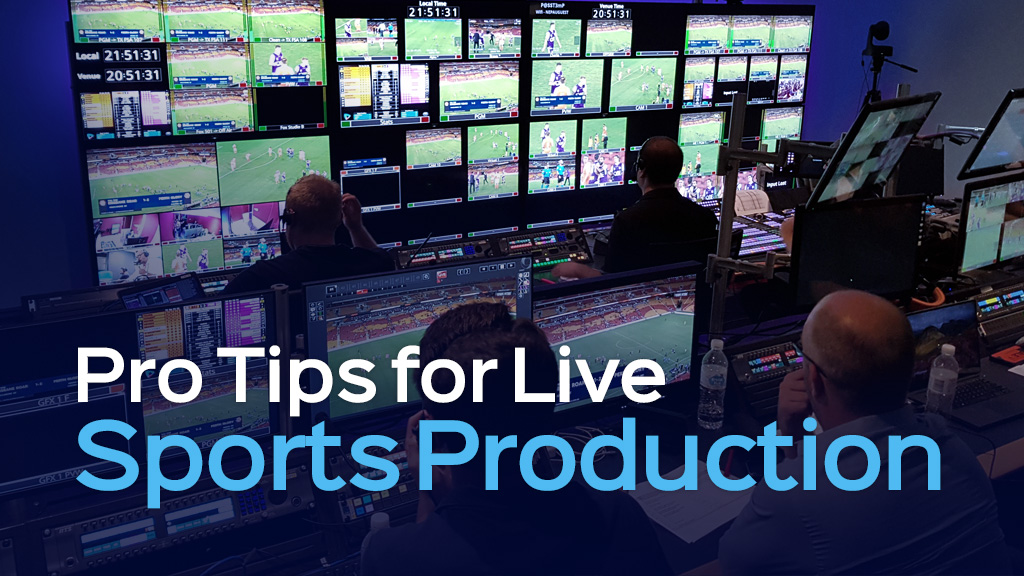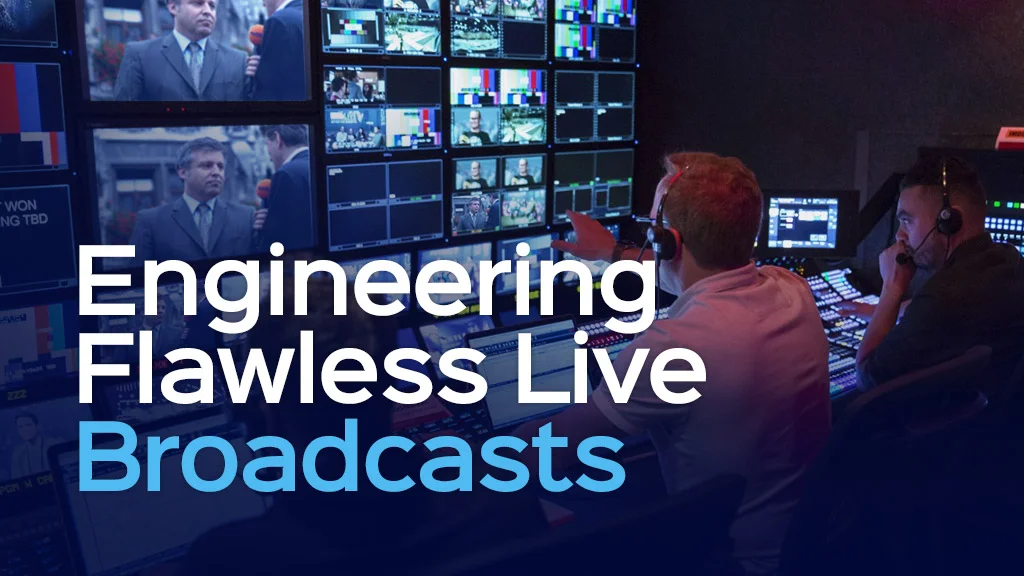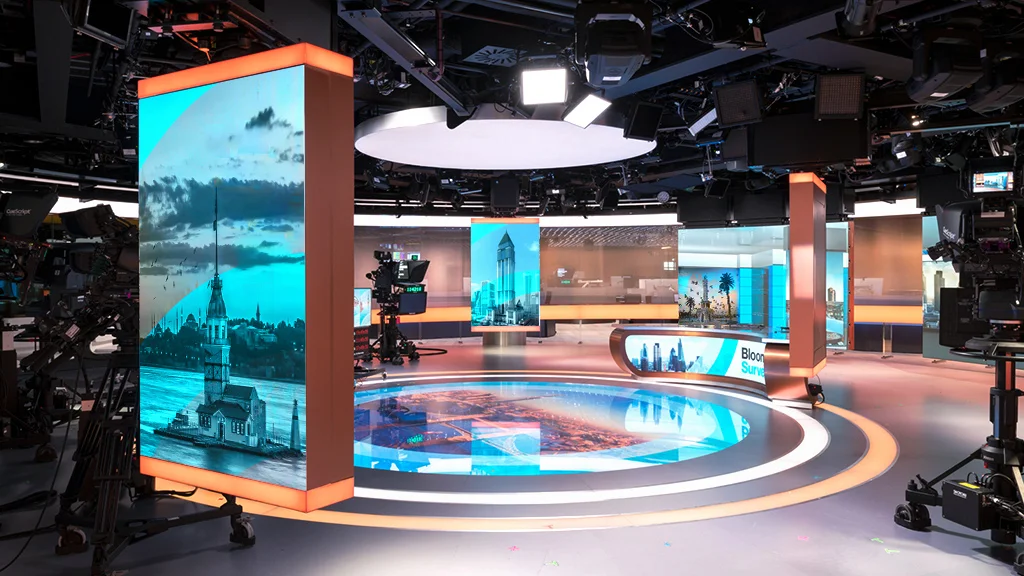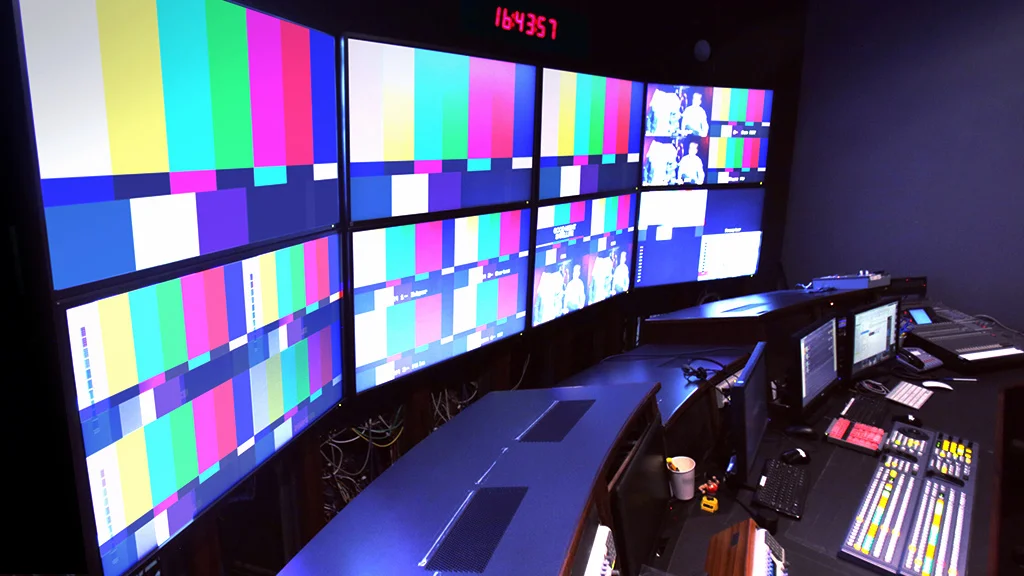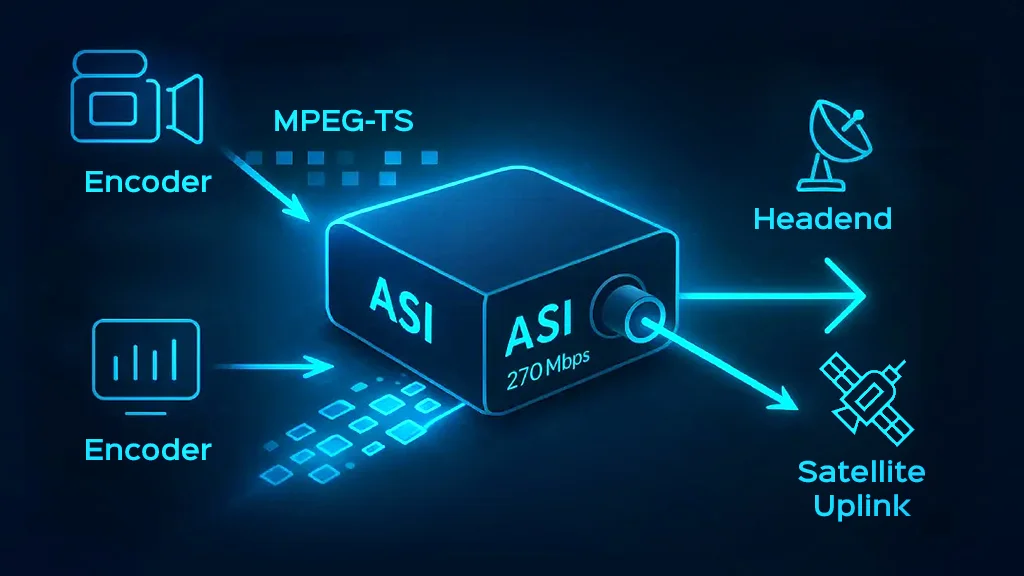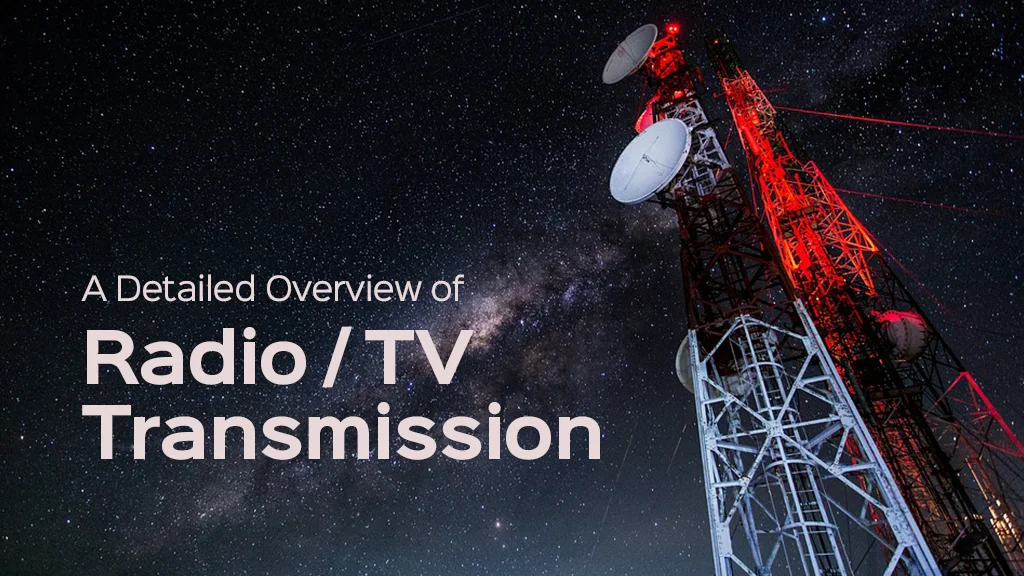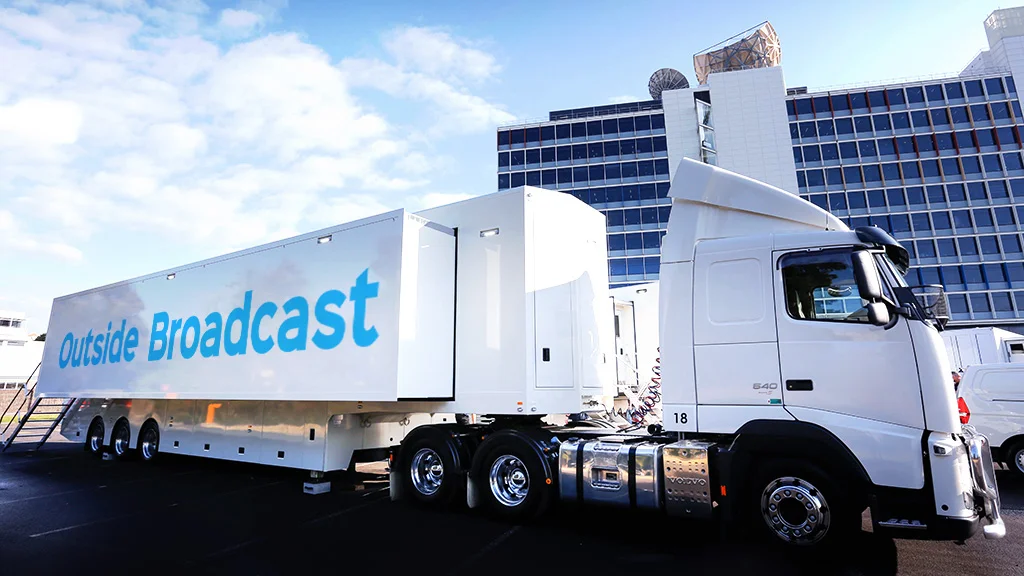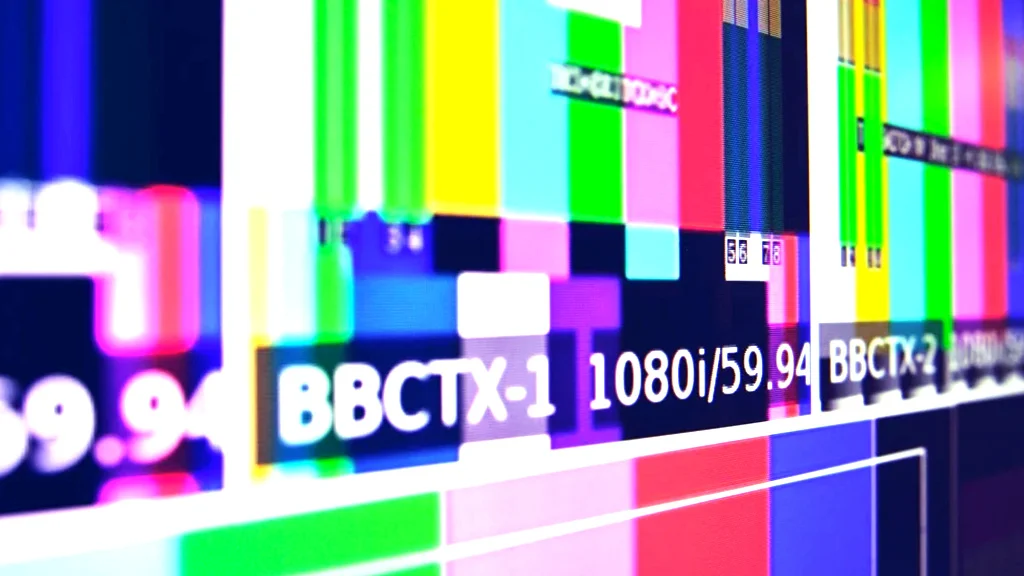
- Article
Latency & Delay Compensation in Broadcast Production Industry
Live broadcast delay mechanisms are critical tools used to manage and control the timing of both audio and video signals. They are essential for ensuring synchronization between various feeds, dealing with potential latency issues, and maintaining broadcast standards.
Additionally, delays are often implemented to prevent unintended or unwanted contents, such as profanities, from being aired. In this article explores the techniques and technologies used to implement delays in Radio TV production industry.
Broadcast delay technology temporarily holds the live feed before it is transmitted to the audience. This, typically ranging from a few seconds to several minutes, allows broadcasters to monitor and, if necessary, censor or alter the content before it reaches the public. This mechanism is vital for preventing inappropriate content from being aired, particularly during live events. The use of profanity delay has become a standard practice, especially in live broadcasts involving interviews, sports events, or award shows where the possibility of unexpected or inappropriate language or action is high.
How profanity delay works in live TV broadcasting
What is audio delay in Bradcasting?
Audio delays are crucial for maintaining synchronization with video feeds and managing latency issues. Professional broadcast equipment , such as digital audio delay devices and mixing consoles, provide precise control over delay times, often adjustable in milliseconds or seconds. For example, Samim digital audio delay , allow engineers to set specific delay durations to ensure audio and video remain in sync.
High-end mixing consoles often come with built-in delay functionalities, enabling engineers to apply delays seamlessly during live broadcasts. These delays help to manage live broadcast delay scenarios where audio might reach the viewers either too early or too late compared to the video, ensuring a cohesive viewing experience.
What is video delay in Bradcasting?
Video delays are equally important in the broadcasting process. Frame synchronizers or dedicated digital video delay devices, such as the Samim DLY3421, are commonly used to delay video streams. These devices can set desired delays on video signals by a specific number of frames or time duration , ensuring that audio and video feeds are perfectly synchronized.
Some audio video delay control equipment also offers live feed or playback with a delay, allowing broadcasters to manage live TV content effectively. These devices are particularly useful for sports and live event broadcasting, where the ability to delay the feed can help prevent the airing of inappropriate content or manage technical difficulties.
Combined Audio and Video Delays
For more complex broadcasting scenarios, combined audio and video delays are often required. Broadcast automation systems provide integrated solutions for managing synchronized delays across both audio and video feeds simultaneously. These systems are designed to handle intricate workflows, ensuring that all elements of the broadcast remain in sync despite the introduced delays.

How to Implement Profanity Delay?
profanity delay is a specific type of delay mechanism used to prevent offensive language from being aired. This technology is crucial during live broadcasts where the risk of unexpected or inappropriate language is higher. The delay allows producers to monitor the content in real-time and mute or bleep out any profanities before they reach the audience or insert appropriate videos instead of unexpected irregular actions.
For instance, during live sports events, interviews, or reality TV shows, the use of broadcast profanity delay helps to maintain the broadcast standards expected by regulators and the viewing public. By implementing a short delay, typically ranging from 5 to 10 seconds, broadcasters can quickly respond to any unexpected occurrences, ensuring that the content remains suitable for all audiences and complies with regulations.
Broadcast Delay Technology
The evolution of broadcast technology has significantly improved the ability to manage delays in broadcasting. Modern digital systems and software solutions offer precise control over delay times and synchronization, ensuring high-quality broadcasts.
Software solutions allow broadcasters to apply delays to pre-recorded audio and video tracks with ease. Tools like Adobe Premiere Pro offer time-shifting features that can be used to introduce desired delays during the editing process.
In live broadcasting, automated systems can provide comprehensive solutions for managing delays. These systems can handle complex workflows, ensuring that all elements of the broadcast remain in sync despite possible gaps and latencies.
The practical applications of broadcast delay is numerous and varied. For example, during a live news broadcast, if an interviewee uses inappropriate language, the delay mechanism allows the producer to censor the content before it is aired. This ensures that the broadcast remains within regulatory guidelines and maintains a family-friendly viewing experience.
In sports broadcasting delay units can be used to manage unpredictable events. For instance, if a player uses offensive language or if an unexpected incident occurs on the field, the delay allows the production team to handle the situation without disrupting the broadcast. This is particularly important for live broadcasts that are watched by a diverse audience, including children.

Future Trends in Broadcast Delay Technology
Looking forward, the future of broadcast technology will likely see further advancements in delay mechanisms. As broadcast standards evolve and the demand for high-quality, synchronized content increases, so too will the technology used to manage these aspects. Emerging technologies, such as AI and machine learning, could play a significant role in automating and enhancing delay management.
For instance, AI could be used to automatically detect and censor inappropriate content in real-time, reducing the need for manual intervention. Similarly, machine learning algorithms could help predict and manage latency issues, ensuring that broadcasts remain synchronized and of high quality.
Managing delays in the broadcast industry is a critical aspect of delivering high-quality, synchronized broadcasts. The use of broadcast delay mechanism ensures that content remains suitable for all audiences while maintaining synchronization between audio and video feeds. Advances in broadcast technology have made it possible to implement these delays seamlessly, addressing latency issues and adhering to broadcast standards.
Whether through professional broadcast equipment, software solutions, or automated systems, the ability to control and manage delays is essential for any broadcaster. By understanding and implementing these technologies, broadcasters can ensure that their live broadcasts meet the highest standards of quality and reliability. As the industry continues to evolve, staying at the forefront of these technologies will be key to maintaining a competitive edge and delivering exceptional broadcast experiences to audiences worldwide.
Delay Management in Different Broadcast Scenarios
In addition to the primary uses of broadcast delay, there are several cases in where delay management becomes critical. One such case is the broadcasting of major live events, such as concerts or political debates, where the stakes are high and the margin for error is minimal.
During such events, the broadcast team must be prepared to handle any unexpected circumstances that could disrupt the broadcast or offend the audience. By employing live broadcast delay mechanisms, producers can ensure that any unexpected technical issues, inappropriate behavior, or controversial statements are managed effectively. This not only protects the broadcaster’s reputation but also ensures that the audience receives a high-quality viewing experience.
Moreover, in sports broadcasting, the use of live TV broadcast delay is essential for managing the dynamic nature of live sports. Delays can help synchronize multiple camera angles, replay crucial moments, and provide commentators with the necessary time to analyze and discuss events. This enhances the overall broadcast quality and viewer engagement.
As broadcast technology continues to advance, the integration of delay management systems with other broadcast tools and platforms will become more seamless. Future innovations may include enhanced real-time analytics, automated content moderation, and improved user interfaces for managing delays.
One promising area is the development of cloud-based broadcasting solutions. These platforms can offer scalable and flexible delay management options, allowing broadcasters to adapt to different broadcast scenarios with ease. Cloud technology can also facilitate better collaboration among remote production teams, ensuring that delays are managed effectively regardless of the team’s physical location.
Additionally, the rise of 5G technology promises to reduce latency issues significantly, enabling more precise and reliable synchronization of audio and video feeds. This will further enhance the ability of broadcasters to deliver high-quality, synchronized live broadcasts, even in challenging environments.
Best Practices for Audio and Video Delay Management
Several high-profile broadcasts have successfully implemented delay management strategies to ensure smooth and high-quality live broadcasts. In popular international live events, broadcasters use complicated delay systems to manage the production requirements. This includes synchronizing multiple camera feeds, integrating live commentaries, and ensuring that any unexpected incidents are handled discreetly.
Similarly, in live news broadcasting, major networks often employ broadcast delay mechanisms to manage the fast-paced and unpredictable nature of live news coverage. This allows producers to ensure that sensitive information is appropriately vetted before being aired, maintaining journalistic integrity and viewer trust.
Samim Group’s Audio Delay Solutions
Samim Group product range for live audio video delay includes modular and standalone Audio delay line equipment mainly used for setting delays over 12G/3G/HD/SD-SDI and digital audio (AES) streaming signals. They are great options to monitor the final broadcast production signal and prevent unwanted, inappropriate, or profanity content from going on air.
Samim Delayers can also be utilized for frame synchronization over all the input signals in the live production chain and for lip sync in final studio output signals.
As an effective and reliable solution for controlling broadcast content, Samim delay control devices are widely used in production and broadcast studios for a safe and secure stream.
